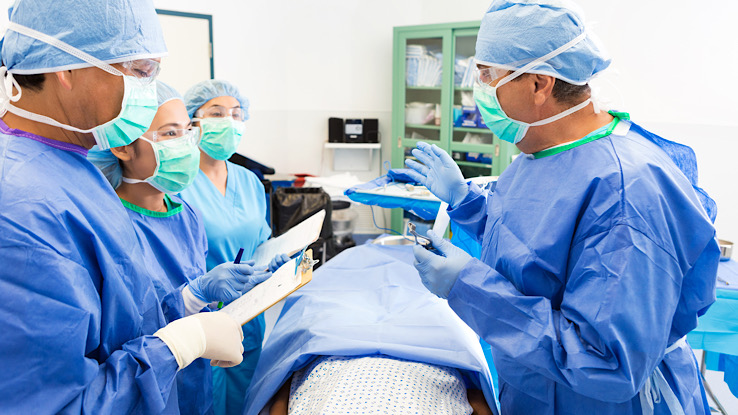
Thinking about what happens to you after you pass away is not easy. Did you leave behind instructions for your loved ones? A last will and testament? Will you be cremated, buried, or immortalized in a mausoleum? Are you an organ donor? Or should you donate your body to science?
Death isn’t quite the subject of smiles and laughs. Death is somber, and for some, it’s scary. Planning for your earthly departure is not a day at the beach. However, it is very important to leave your loved ones instructions on what you want to happen to your body after your death.
Organ Donation Versus Whole-Body Donation
If you are an organ donor, doctors can use your vital organs, eyes, and tissue to save or enhance the lives of people needing transplants. Organ donation differs from a whole-body donation in that the donor must still be alive when doctors remove the organs and tissues. Donated organs and tissue must come from a living person who has been certified to have brain death. This means the patient’s body is being kept alive by life support, and the brain stem is beyond repair. When brain death occurs for an organ donor, a team of organ retrieval doctors immediately begins removing all viable organs and tissue for transplantation. Becoming an organ donor is a noble and commendable choice. One organ donor can save up to eight lives and enhance up to 75 more.
However, some people go a step further to contribute to scientific and medical communities. Various programs can give you the opportunity to make a significant impact through whole-body donation. This allows your body to help preserve the lives of countless people through education, medical training, and scientific research. Read on to learn more about donating your body for education and research.
The History Of Body Donation
Whole-body donation may seem like it would be a relatively newer scientific development. But, the practice of cadaver research is from the third century, when early physicians began dissecting human corpses to learn more about the human body.
In the United States, cadaver research didn’t take off until the 1800s. Unclaimed bodies were used for medical and scientific research until the official Uniform Anatomical Gift Act of 1968. This law allowed individuals to elect to donate their bodies to medical and scientific research. It also allowed families of deceased individuals to donate the bodies of their loved ones on their behalf. Many universities now offer body donation programs, and an average of 20,000 people donate their bodies per year in the United States.
Why Do People Donate Their Bodies to Science?

There are many reasons people decide to donate their bodies. Some of these reasons include:
- Donating is a way to give back to society — Your body can be used for many scientific and medical purposes. This includes research on how the body responds to emergent conditions like cardiac arrest, complex vascular and lung health studies, and practice for upcoming surgeons and medical examiners.
- Donating because you value education — Medical schools use cadavers to teach surgical students new techniques. This is invaluable because it allows students to practice on real human bodies without putting patients in jeopardy.
- Donating to decrease animal testing — Much effort has been made to replace animal tests with tests conducted on human tissue. Testing on human tissue holds higher translational value for human patients and reduces the number of live animals required for testing.
- Alternative to typical burial — the cost of burial increases every year. Funerals and burials are expensive, often costing upwards of $10,000. This is a price tag many people simply cannot afford. Whole-body donation is a compassionate and low-cost alternative to traditional burials.
What Happens When You Donate Your Body to Science?
When you donate to a whole-body donation program, they use your body for a few things. Depending on your age, health, pre-existing conditions or diseases, and weight, scientists and doctors will decide where they send your body.
- Sometimes bodies are placed in environments where researchers study the process of decomposition. This can help forensic scientists better understand the times of death in criminal cases.
- Some bodies are dissected, and the organs are sent to various universities to be studied by students. This can mean your body will be used to teach surgical practices to medical students. Your body could potentially save the lives of hundreds of people if new surgical techniques are developed and practiced on your body.
- Medical schools often use whole-body donation programs to source cadavers for anatomical teaching.
Medical and scientific research on whole-body cadavers is indispensable. The more scientists and doctors know about the human body, the better care they can provide to those in need.
The Process to Donate Your Body to Science
If you have decided that whole-body donation is something you are interested in, there are a few steps you need to take. Body donation clinics require a signed Anatomical Bequest form from the prospective donor. Some clinics accept power-of-attorney or next-of-kin signatures, whereas others only accept signatures from the donors themselves. Upon death, the clinic is notified of the donor’s passing. The clinic will then determine if they can take the body based on set criteria. They will study the body for some time, typically up to 15 months. The most common final disposition of the donor’s body after study is resomation.
Giving From Beyond the Grave
Whole-body donation for medical research and education can be a compassionate way to give back to society after you pass away. Discuss with your family and loved ones if you wish to become a whole-body donor. Because you donate your body to science, funeral arrangements will be less costly. Your family can decide what type of service or memorial they want to host to celebrate your life. Who knows, you might just save lives from beyond the grave.
Resource Links:
- “Deceased Donation and Whole Body Donation” via Living Bank
- “A Deep Dive Into The History Of Cadaver Use and Whole Body Donation” via Research for Life
- “Uniform Aanatomical Gift Act” via Cornell Law
- “How Much Does A Funeral Cost?” via Policy Genius
- “Organ Donation Statistics” via OrganDonor.gov
- “Body Donation at Mayo Clinic” via Mayo Clinic
- “Resomation” via Mayo Clinic
- “Brain Death and Care of the Organ Donor” via PubMed





